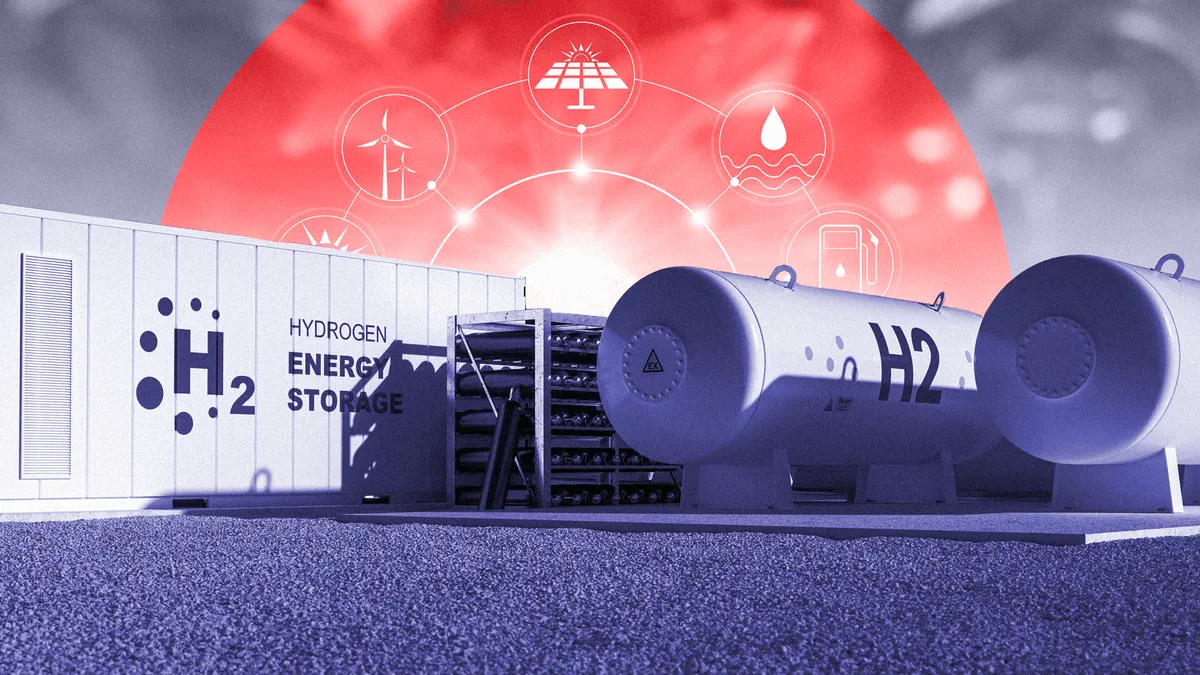Dive Brief:
-
The Massachusetts Institute of Technology (MIT) Startup Exchange showcased five startups, all developing emerging hydrogen production technologies, at a workshop and panel on Friday.
-
While two startups aim to drive down the cost of electrolysis, three others look to pilot new approaches to producing blue and green hydrogen.
-
Matthew Blieske, global hydrogen product manager for Shell, told the startups that hydrogen needs new low-cost solutions to accelerate tepid growth. However, Blieske encouraged startups to seek corporate partnerships, warning entrepreneurs who plan to strike out on their own that they could struggle to keep costs in check.
Dive Insight:
When it comes to producing hydrogen, the startups say there's more than one way to split a molecule.
While much of the focus in the hydrogen industry is centered on the need to increase the efficiency and scale of electrolyzers to enable cost-competitive production of green hydrogen, the five startups envision a different approach.
Industrial decarbonization, according to Laureen Meroueh, CEO of MIT hydrogen startup Alchemr, remains an unsolved challenge, but is critical to addressing climate change. "Our customers have aggressive decarbonization goals," she said, "and need a truly zero emission solution."
Green hydrogen, Meroueh said, is that solution, and while the technology already exits, it's very expensive.
"What we're doing is bringing down the cost," she said, describing the company's plans to develop electrolyzers using new technologies that use less expensive materials. By 2024, she said, Alchemr will have a 1500 kw electrolyzer that costs less than $300 per kilowatt to run and produces hydrogen for just $1.50 per kilogram.
Taylor Huff, CEO of electrolysis startup Origen, pitched a similar vision of cutting electrolysis costs by removing precious metals from the process.
"Today's electrolysis is too expensive because it requires exotic metals," he said. "Solid titanium and gold — that's more like a jewelry box. It's not meant for industrial scale."
Other startups at Friday's showcase took a different approach entirely, with KC Tran, CEO of MAAT Energy, describing his vision for using microwave energy to extract hydrogen gas, and Ryan Gillis, CEO of Thiozen, presenting his method for deriving hydrogen from hydrogen sulfide, a waste product from certain industrial products such as oil refining.
Trevor Best, CEO of Syzygy Plasmonics, presented a third option for producing hydrogen using LED lights. The LEDs could be powered with renewable energy and could split hydrogen from a variety of feedstocks, including natural gas or from ammonia.
"Today, hydrogen costs $6 to $20 per kilogram," Best said. "We can achieve $1 to $3 per kilogram, and we have feedstock flexibility. We can make blue hydrogen from methane, or green hydrogen from ammonia."
The high cost of hydrogen, Shell's global hydrogen product manager Matthew Blieske told the startup executives, has indeed held the industry back.
"Shell hydrogen has been around for quite a while," he said. "It has had slow growth because it's not ready. In the early days, the technology was not robust enough to scale, and as those technologies became more robust it was very costly."
But cost isn't the only barrier hydrogen faces, Blieske said. Coordinated policy support enabled wind and solar to grow. Hydrogen, he said, has not enjoyed the same government support.
That has begun to change, he said, particularly in California. Hydrogen has also begun to enjoy greater support on the federal front, with recent announcements from the U.S. Department of Energy that the DOE has funding available to support hydrogen research and pilot programs. On Friday, the DOE announced plans to fund $160 in cost-sharing cooperative agreements aimed at developing "technologies for the production, transport, storage, and utilization of fossil-based hydrogen, with progress towards net-zero carbon emissions."
That cooperative element, Blieske said, will be key in the hydrogen business, especially for startups like those he spoke to at MIT.
"I deal with startups often, and the only reason my team exists is because of the complexity in delivering a technology to a product that is certified, safe and robust, he said. "I cannot understate how difficult that is. It will always cost more than you think."
Blieske cautioned the startup CEOs that if they tried to raise funding to deploy a new hydrogen technology on their own, they were likely to disappoint their shareholders. Instead, he recommended partnering with mature corporations to help make their visions a reality.
"Find a user who can help you bring your technology to market," he said. "I have yet to see a technology startup make that transition."













